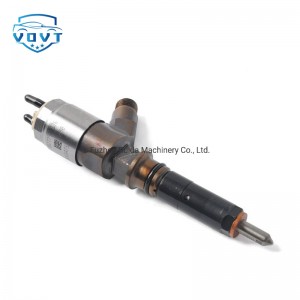New High Quality Diesel Injector 280-0574 10R-8989 253-0620 10R-8990 355-6110 20R-8047 For CAT C15
Products Description
| Reference. Codes | C15 |
| Application | C15 |
| MOQ | 4PCS |
| Certification | ISO9001 |
| Place of Origin | China |
| Packaging | Neutral packing |
| Quality Control | 100% tested before shipment |
| Lead time | 7~10 working days |
| Payment | T/T, L/C, Paypal, Western Union, MoneyGram or as your requirement |
Flow characteristics of the injector
The flow characteristics of the injector refer to the relationship between the amount of fuel injected by the injector under different working conditions and parameters such as injection time and injection pressure. It is mainly affected by factors such as injector structure, injection pressure, injection time and fuel characteristics. The following is a detailed introduction:
Injector structure
Number and diameter of spray holes: With a large number of spray holes and a small diameter, the fuel dispersion is good under the same injection pressure and time, the flow rate is relatively small but the atomization effect is good, which is conducive to the full mixing of fuel and air; with a small number of spray holes and a large diameter, the flow rate is large, but the fuel atomization may be relatively poor.
Needle valve structure: The opening and closing speed and lift of the needle valve will affect the injection characteristics. For example, if the needle valve opens quickly and the lift is appropriate, the fuel can be sprayed out at a large flow rate in a short time; if the needle valve is not closed tightly, it will cause fuel dripping, affecting the flow characteristics and combustion effect.
Injection pressure: The injection pressure is positively correlated with the flow rate. The higher the pressure, the faster the flow rate of the fuel through the spray hole, and the greater the amount of fuel injection per unit time. Moreover, higher injection pressure helps to atomize the fuel better, making the oil droplet size smaller and more evenly distributed, and improving the mixing quality of fuel and air. However, if the injection pressure is too high, the fuel may be over-atomized, resulting in excessive oil and gas in the combustion chamber, affecting the combustion efficiency, and also increasing the workload and wear of the injector.
Injection time: The injection time directly determines the amount of fuel injection. Under certain injection pressure and injector structure conditions, the longer the injection time, the more fuel injection. However, different engine operating conditions have different requirements for injection time. For example, the engine requires a smaller fuel injection amount and a shorter injection time under idle conditions; under high load conditions, a longer injection time is required to provide enough fuel to meet the power requirements of the engine.
Fuel characteristics: The viscosity, density and other characteristics of the fuel will affect its flow and injection performance in the injector. Fuel with higher viscosity has greater flow resistance. Under the same injection pressure and time, the flow rate is relatively small and is not conducive to fuel atomization; fuel with higher density has a larger mass per unit volume, and under the same injection time and nozzle area, the injection mass is larger.
The flow characteristics of the injector have a crucial impact on the performance and emissions of the engine. By optimizing the structural design of the injector, reasonably controlling the injection pressure and time, and making corresponding adjustments based on the fuel characteristics, the flow characteristics of the injector can be better matched to various working conditions of the engine, thereby improving the engine's power, economy and environmental protection.






















